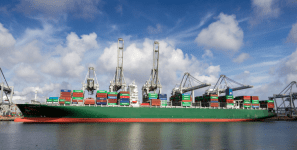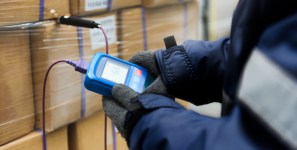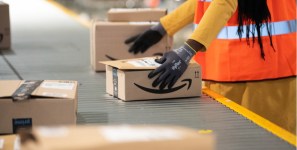Global Trade Features provides business reviews, roundups, and commentaries on topics of international trade, banking, logistics and transportation.

How to Avoid High Truck Detention Times
Efficiency is one of the most important traits for any fleet to have but one of the most challenging to… Read More
SMALL POWERHOUSES: NICHE SPECIALTIES MAKE THESE 20 COMMUNITIES STAND OUT
Niche cities are playing a key role in our nation’s economic development, according to the McKinsey Global Institute’s July 2019… Read More
TOP CONTAINER PORTS: LA & NY … AND THEN EVERYONE ELSE
The U.S. Army Corps of Engineers compiles annual lists of the top container ports by volume, with the figures for… Read More
America’s Expanding Ports: Ports Investing to Improve Their Market Share
What do ports in Maryland, Georgia, Texas, Florida, and California have in common? A commitment to future growth through current… Read More
AGRICULTURAL SUBSIDIES: EVERYONE’S DOING IT
Everybody’s Subsidizing $700 billion every year – that’s how much governments worldwide provide in some form of subsidy to their… Read More
FROM FACTORY TO FINALS: THE SUPPLY CHAIN OF A BASKETBALL
The Rebound It’s been a long journey to the NBA finals. The 2019-20 NBA season went on hiatus on March… Read More
SHIPPERS ON INTERMODAL: CHANGES NEEDED FOR GROWTH OPPORTUNITIES
The intermodal transportation sector is experiencing an interesting shift as of lately. The combination of disruptions from the pandemic while… Read More
BEHOLD, IT’S AMERICA’S TOP 50 POWER PORTS
Some ports excel in imports, some in exports, others in domestic trade and still more in international trade. America’s Top… Read More
7 Industry Experts Weigh In On Blockchain and the Fresh Food Supply Chain
Editor’s Note: While the writer filed this story before the magnitude of the global pandemic was known, the subject matter… Read More
New Fulfillment Frontier: Going the Last Mile in Package Management
We are moving into the traditionally high-volume shopping months—back-to-school, Black Friday, Cyber Monday, the holidays, and post-holiday sales. All this… Read More
Riding the Wave of Demand: All it took was a Global Pandemic to Sort Out the E-Commerce Winners from the Losers
Undeniably, businesses all around the world today find themselves grappling with the profound changes we are experiencing as the world… Read More
Back to Growth: U.S. Business Leaders Have Rosy Outlook for Economy
The COVID-19 pandemic has affected every aspect of our work and life. Business executives have had to quickly reconfigure operations,… Read More
« Previous 1 2 3 4 5 … 31 Next »













